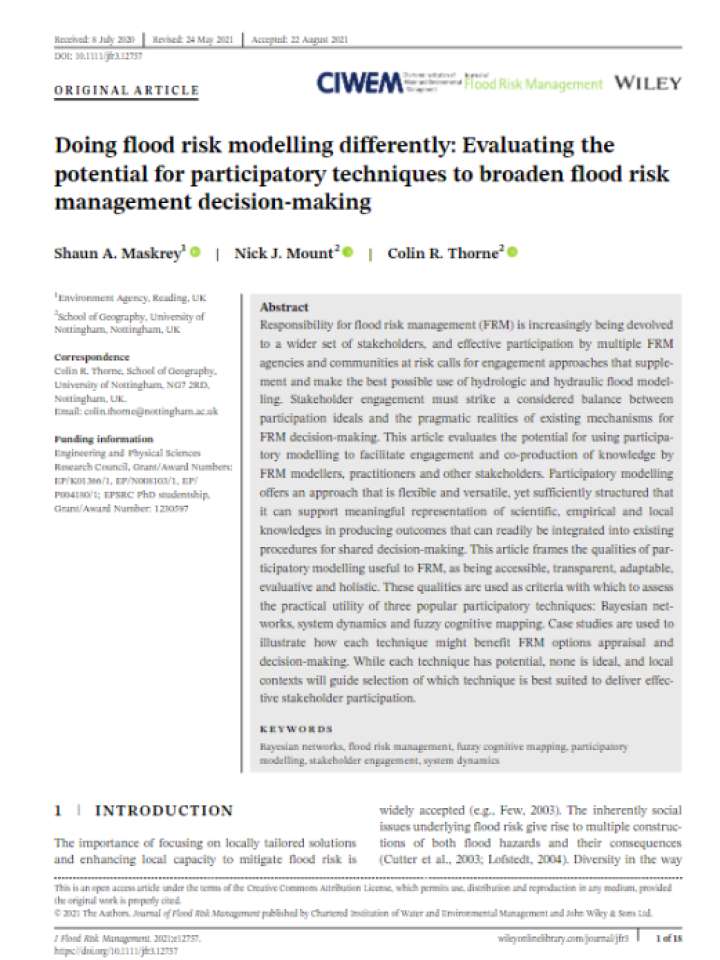Doing flood risk modelling differently: Evaluating the potential for participatory techniques to broaden flood risk management decision-making
This article evaluates the potential for using participatory modelling to facilitate engagement and co-production of knowledge by Flood Risk Modelling (FRM) modellers, practitioners and other stakeholders. Participatory modelling offers an approach that is flexible and versatile, yet sufficiently structured that it can support meaningful representation of scientific, empirical and local knowledges in producing outcomes that can readily be integrated into existing procedures for shared decision-making. This article frames the qualities of participatory modelling useful to FRM, as being accessible, transparent, adaptable, evaluative and holistic. These qualities are used as criteria with which to assess the practical utility of three popular participatory techniques: Bayesian networks, system dynamics and fuzzy cognitive mapping. Case studies are used to illustrate how each technique might benefit FRM options appraisal and decision-making.
The study finds that the use of flood risk modelling to inform FRM decision-making provides the scientific evidence necessary to achieve technical credibility and demonstrate a sound business case when appraising options and designing FRM projects. For stakeholders to participate effectively, participatory modelling should be accessible, transparent, adaptable, evaluative and holistic. Of the three popular participatory modelling techniques examined according to these qualities, none is ideal, although each technique has potential and local contexts will guide selection of which technique is best suited to deliver effective stakeholder participation.
Explore further
